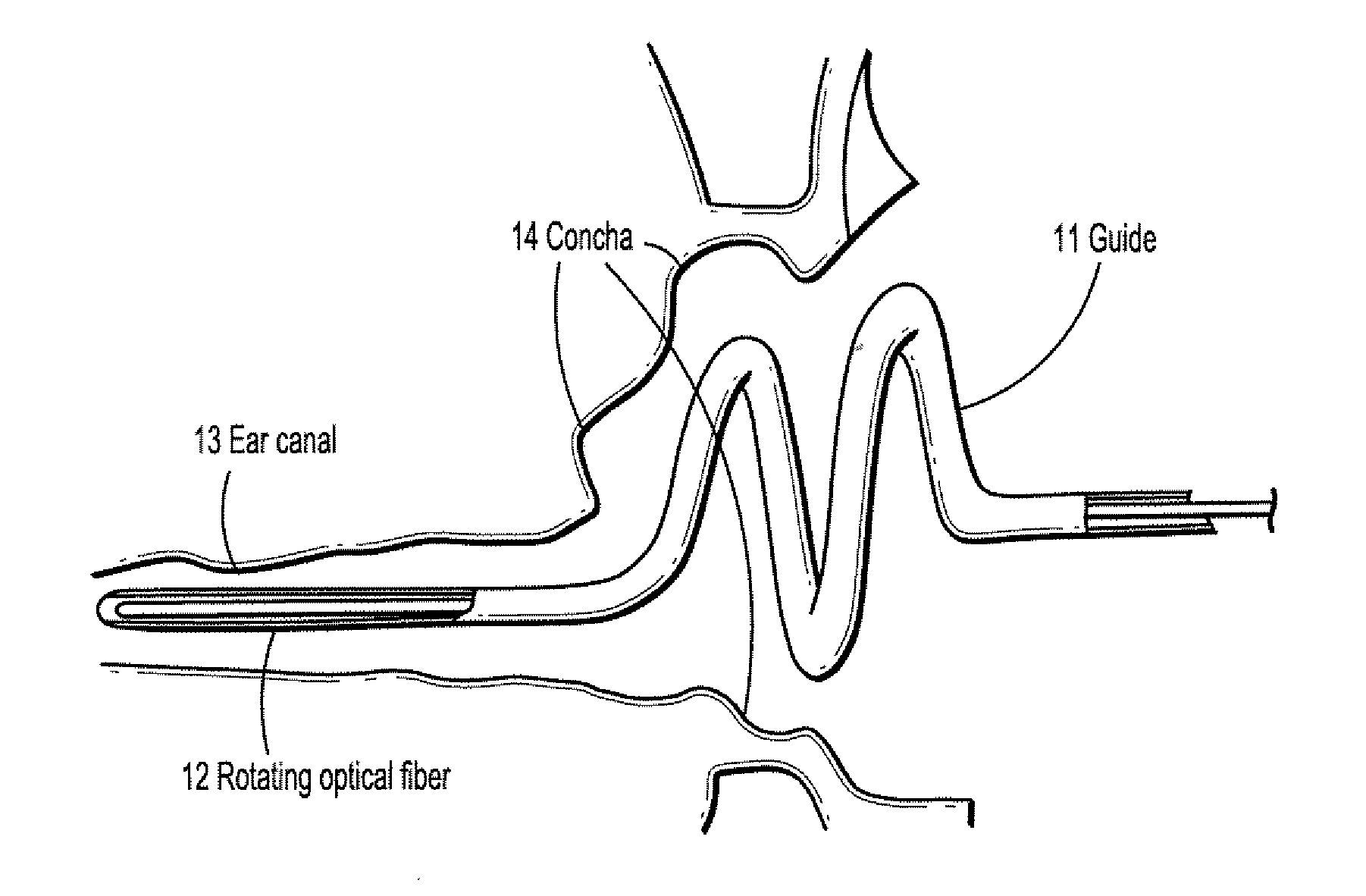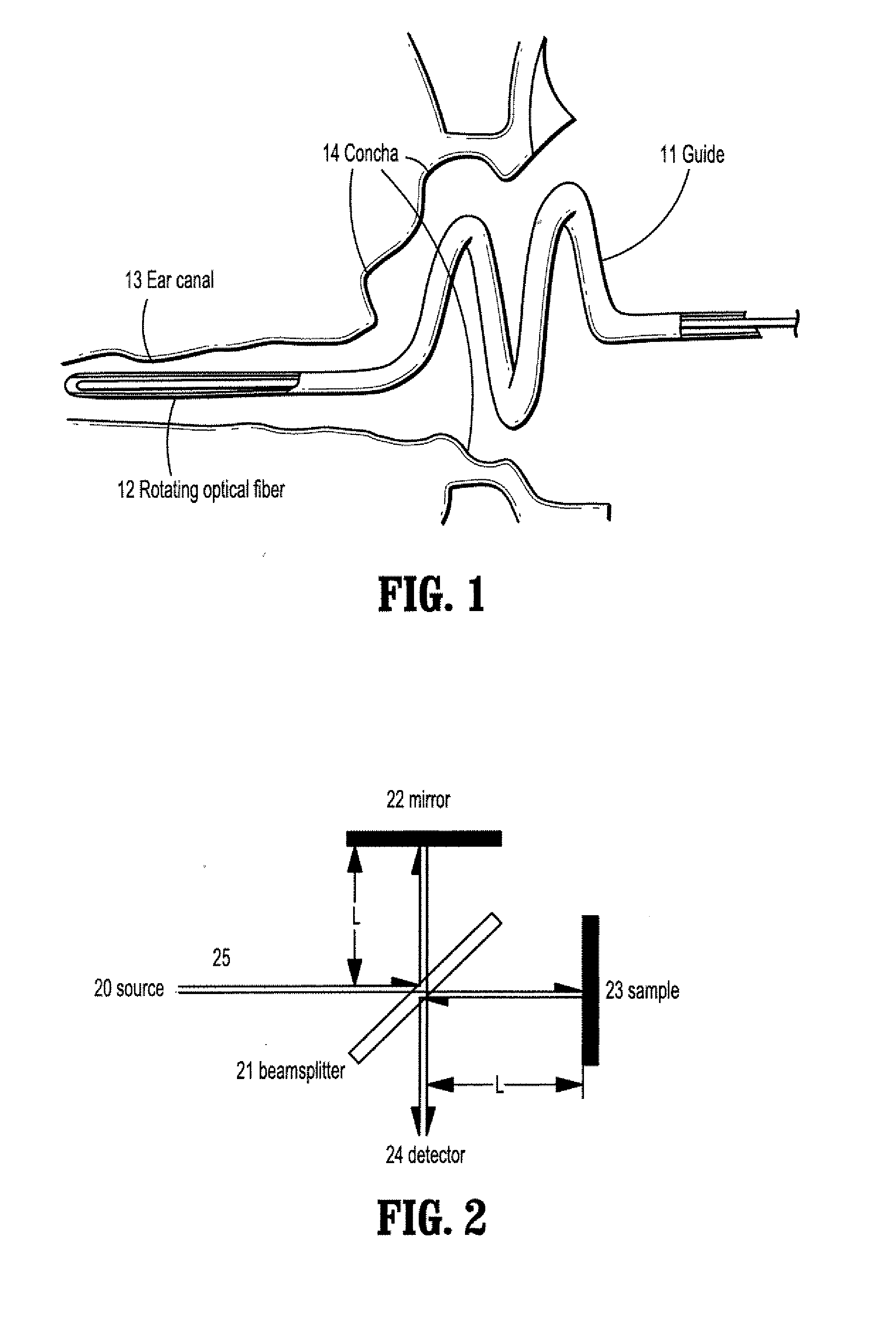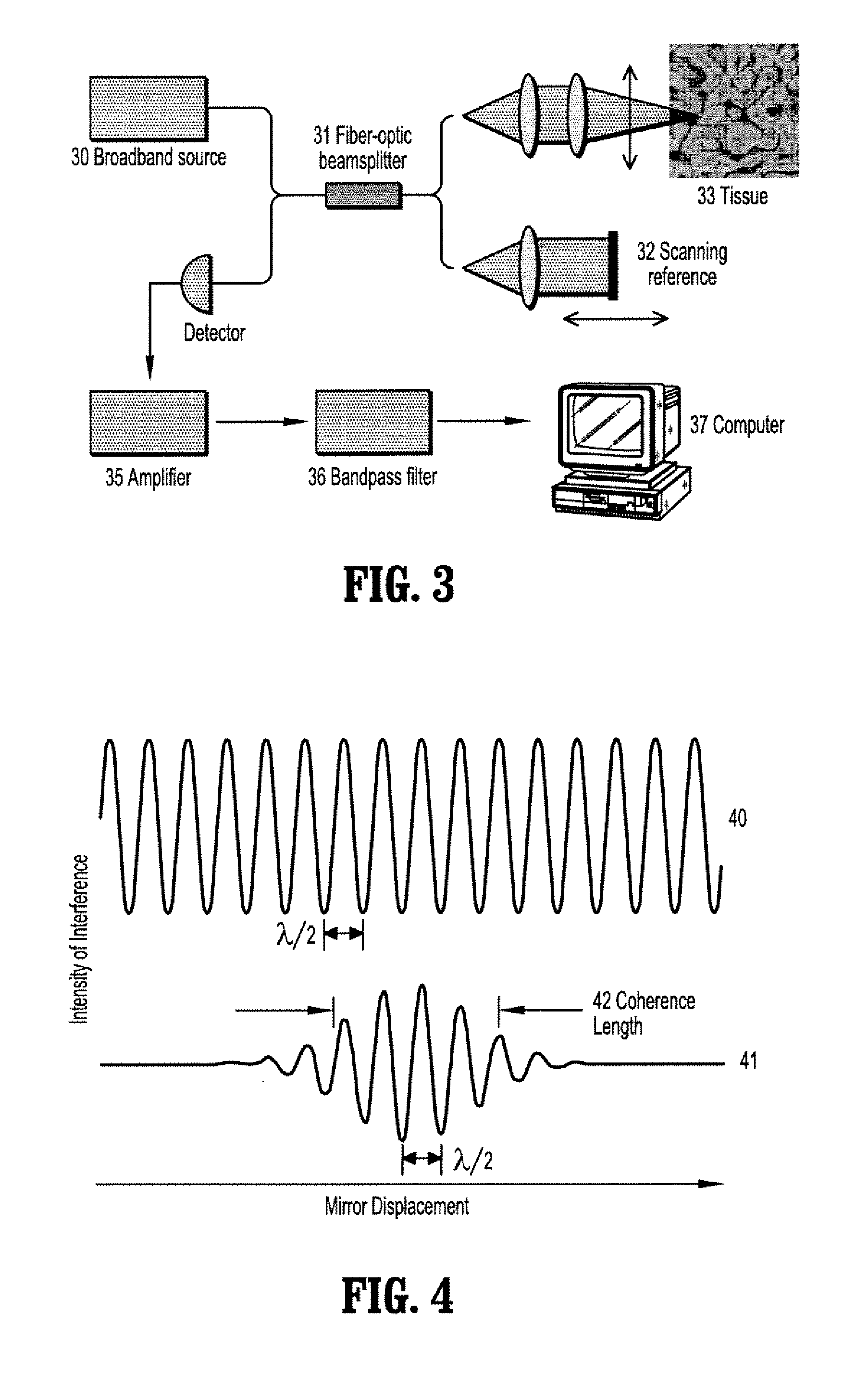System and method for reconstruction of the human ear canal from optical coherence tomography scans
a technology of optical coherence tomography and human ear canal, applied in the field of imaging techniques, can solve the problems of inability to accurately reconstruct the ear canal, inability to accurately predict the ear canal,
- Summary
- Abstract
- Description
- Claims
- Application Information
AI Technical Summary
Benefits of technology
Problems solved by technology
Method used
Image
Examples
Embodiment Construction
[0047] Exemplary embodiments of the invention as described herein generally include systems and methods for the extraction of the ear surface using OCT scanning data and 3D reconstruction algorithms and evaluation procedures.
[0048] OCT performs imaging by measuring the echo time delay and intensity of backscattered and backreflected light using an interferometric correlation technique. Light from a light emitting diode (LED) is coupled into an optical fiber. The light is coupled out in a sideway beam and the reflected and backscattered light is coupled back into the optical fiber. The optical fiber rotates to scan a plane and needs to be translated to measure a 3D volume. A sleeve guiding the rotating fiber is used to move the fiber along a certain scan path. If one can extract the distances from the fiber to the surface out of the scan data and if one knows the parametric curve function of the scan path, one can compute a 3D representation of the scanned ear surface.
[0049]FIG. 1 ...
PUM
 Login to View More
Login to View More Abstract
Description
Claims
Application Information
 Login to View More
Login to View More - R&D
- Intellectual Property
- Life Sciences
- Materials
- Tech Scout
- Unparalleled Data Quality
- Higher Quality Content
- 60% Fewer Hallucinations
Browse by: Latest US Patents, China's latest patents, Technical Efficacy Thesaurus, Application Domain, Technology Topic, Popular Technical Reports.
© 2025 PatSnap. All rights reserved.Legal|Privacy policy|Modern Slavery Act Transparency Statement|Sitemap|About US| Contact US: help@patsnap.com



